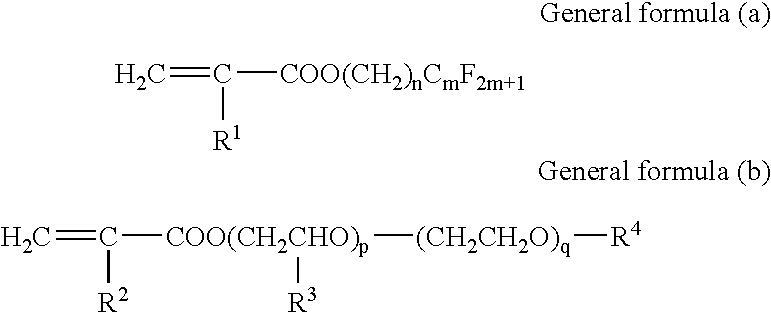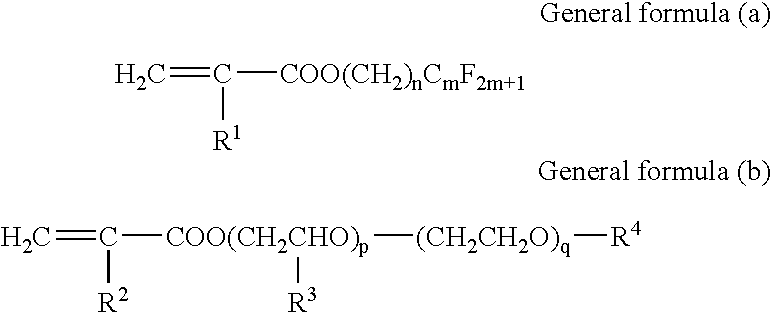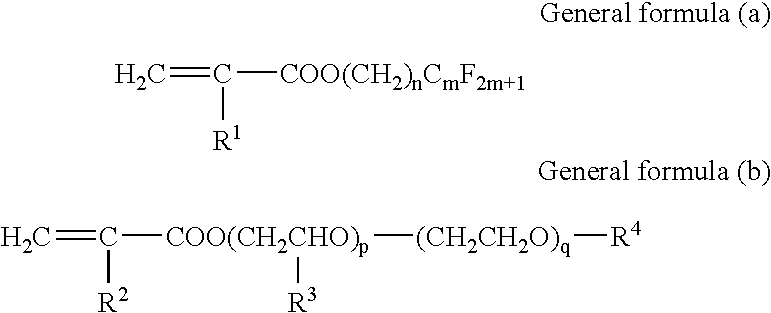Image forming material
a technology of image forming and material, applied in the field of image forming materials, can solve the problems of insufficient adhesive property to the substrate, insufficient adhesive property, and document that does not disclose anything about the smoothness of the thermoplastic resin layer, and achieves superior contact characteristics with glass substrates. high speed
- Summary
- Abstract
- Description
- Claims
- Application Information
AI Technical Summary
Benefits of technology
Problems solved by technology
Method used
Image
Examples
example 1
[0126]Onto a temporary support of a polyethylene terephthalate film having a thickness of 75 μm was applied a coat solution having the following formulation Cu1, and dried thereon to form a thermoplastic resin layer having a dry film thickness of 20 μm.
[0127]
Thermoplastic resin layer formulation Cu1:Methyl methacrylate / 2-ethyl hexyl acrylate / benzyl5.8partsmethacrylate / methacrylic acid copolymer(Copolymer composition ratio (molar ratio) = 55 / 30 / 10 / 5,Weight-average molecular weight = 100,000, Tg ≈ 70° C.)Styrene / acrylic acid copolymer13.2parts(Copolymer composition ratio (molar ratio) = 65 / 35,Weight-average molecular weight = 10,000, Tg ≈ 100° C.)Compound formed by dehydration-condensation of9parts2 equivalents of pentaethylene glycolmonomethacrylate with bisphenolA (BPE-500 made by Shin-Nakamura Chemical Co., Ltd.)Methylethyl ketone53partsMethanol17partsCopolymer of the invention shown in Table 10.55part(20% by weight solution in methylisobutyl ketone)
[0128]
TABLE 1MonomerCopolymeri-M...
examples 2 to 16
[0186]The same processes as example 1 were carried out except that, instead of “the copolymer of the invention shown in Table 1” in the formulation of the thermoplastic resin layer Cu1 of example 1, “the copolymers of the invention” in examples 2 to 16 respectively shown in Table 1 were used so that image forming materials of examples 2 to 16 were formed to prepare a color filter.
example 17
[0187]The same processes as example 1 were carried out, except that, in place of the copolymer of the invention that was commonly used in the formulations of the coating solutions for respective photosensitive layers (red, green, blue, black) in example 1, a copolymer (weight average molecular weight: 30,000) of 60% of C8F17SO2N(C4H9)CH2CH2OCOCH═CH2 and 40% of H(O(CH3)CHCH2)6OCOCH═CH2 was used, so that an image forming material was formed to prepare a color filter.
PUM
| Property | Measurement | Unit |
|---|---|---|
| thickness | aaaaa | aaaaa |
| thickness | aaaaa | aaaaa |
| thickness | aaaaa | aaaaa |
Abstract
Description
Claims
Application Information
 Login to View More
Login to View More - R&D
- Intellectual Property
- Life Sciences
- Materials
- Tech Scout
- Unparalleled Data Quality
- Higher Quality Content
- 60% Fewer Hallucinations
Browse by: Latest US Patents, China's latest patents, Technical Efficacy Thesaurus, Application Domain, Technology Topic, Popular Technical Reports.
© 2025 PatSnap. All rights reserved.Legal|Privacy policy|Modern Slavery Act Transparency Statement|Sitemap|About US| Contact US: help@patsnap.com



